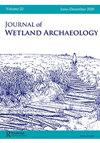Ecofacts – Plant and Animal Analyses
Q1 Arts and Humanities
引用次数: 3
Abstract
Wet sites, due to reduced oxygen, provide excellent preservation of both plant and animal remains. Due to the clear importance of Sunken Village as an acorn leaching and processing location – largely because of the aquifer streaming through this approximately 100–125 m of intertidal beach – the focus in Section 4 is on the leaching pits and acorn remains. First we begin with a look at identifying the actual plant materials and fuels used at this site, requiring both visual observations of the plant remains and also cellular analysis of the wood, fibers and charcoal. Many of the perishable artifacts are introduced in this section while identifying their wood and fiber construction materials. Second we report the abundant acorns and acorn leaching pit features, so numerous at Sunken Village. Third, seed retrieval is explored, comparing the results of flotation techniques and fine wet screening. And finally, the faunal analysis reflects the use of these animal resources in a secondary position, and probably to support the group while managing the acorn leaching pits from this site. The obvious contrast here to other Northwest Coast and Columbia River sites is the reduced focus on fisheries from this location.生态事实-植物和动物分析
潮湿的地方,由于氧气减少,为植物和动物的遗体提供了极好的保存。由于沉没村作为橡子浸出和加工地点的明显重要性——主要是因为这片约100-125米的潮间带海滩有含水层流过——第4节的重点是浸出坑和橡子残骸。首先,我们先来看看如何确定这个地点使用的实际植物材料和燃料,这既需要对植物遗骸进行视觉观察,也需要对木材、纤维和木炭进行细胞分析。本节介绍了许多易腐烂的文物,同时确定了它们的木材和纤维建筑材料。其次,我们报告了丰富的橡子和橡子浸坑的特点,所以在沉没村众多。第三,对种子回收进行了探索,比较了浮选技术和细湿筛分的结果。最后,动物区系分析反映了这些动物资源的次要地位,可能是为了支持这个群体,同时管理这个地点的橡子浸出坑。这里与其他西北海岸和哥伦比亚河地区的明显对比是,这里对渔业的关注程度有所降低。
本文章由计算机程序翻译,如有差异,请以英文原文为准。
求助全文
约1分钟内获得全文
求助全文
来源期刊

Journal of Wetland Archaeology
Arts and Humanities-Archeology (arts and humanities)
CiteScore
1.40
自引率
0.00%
发文量
6
期刊介绍:
The Journal of Wetland Archaeology publishes a wide range of contributions in all fields of wetland archaeology. It includes scientific and methodological features, geoprospection, environmental reconstruction, wetland hydrology, cultural aspects of wetland archaeology, as well as conservation, site management, legislation, and site protection. All periods and all geographic regions are covered.
 求助内容:
求助内容: 应助结果提醒方式:
应助结果提醒方式:


